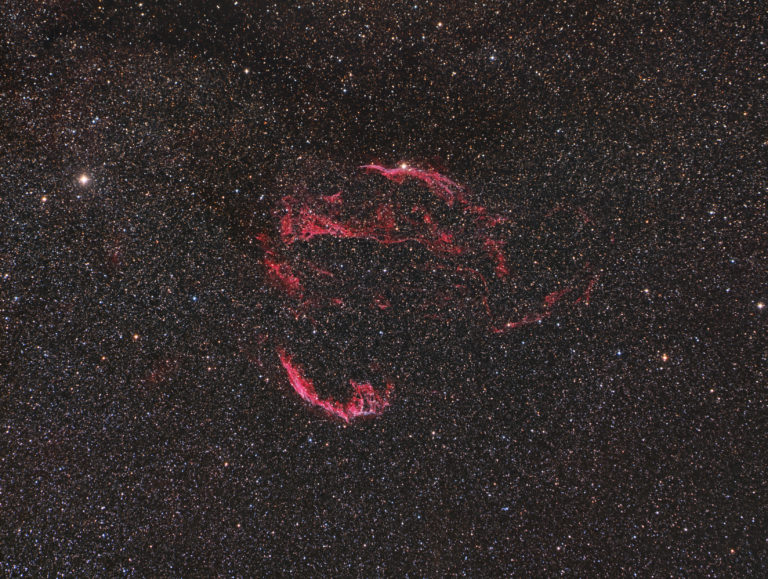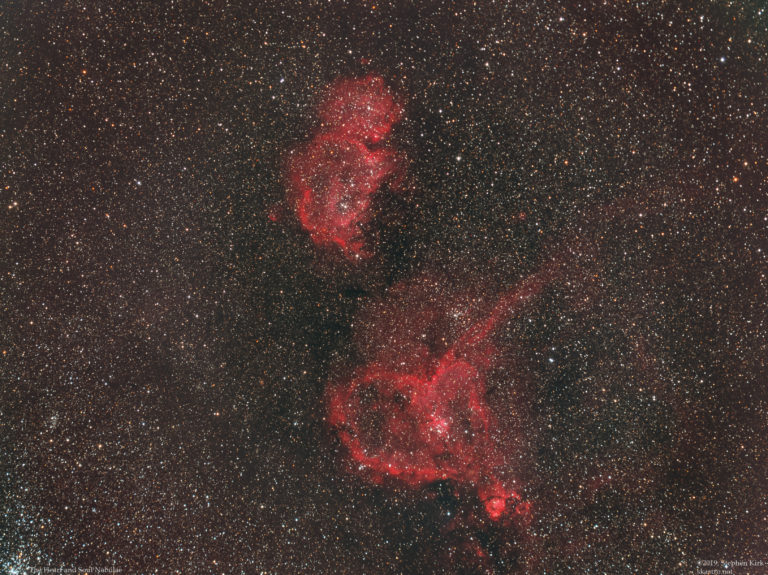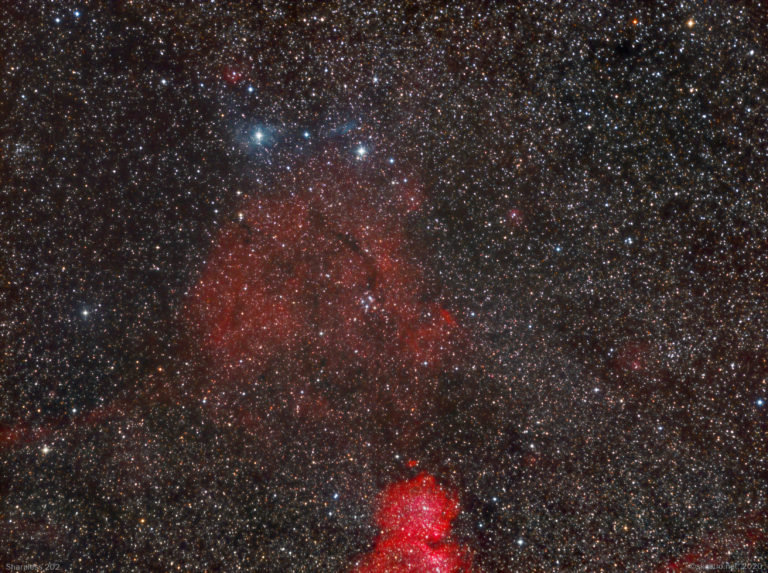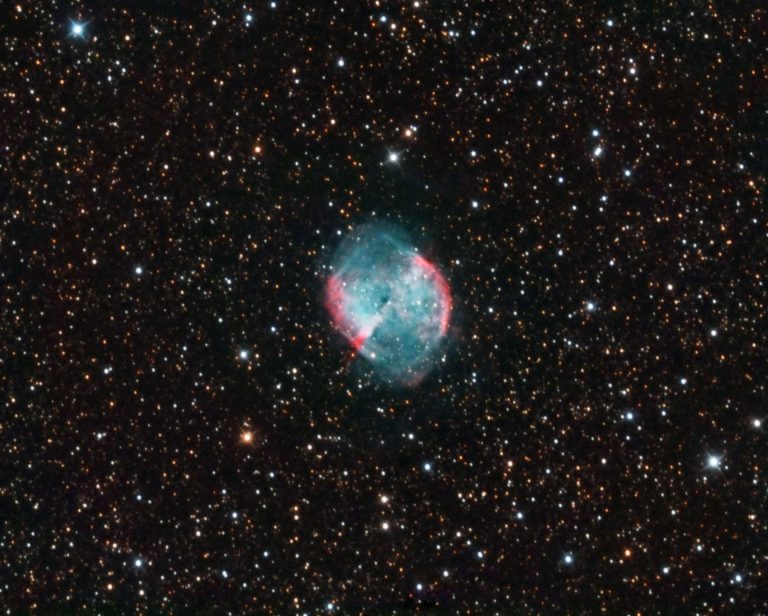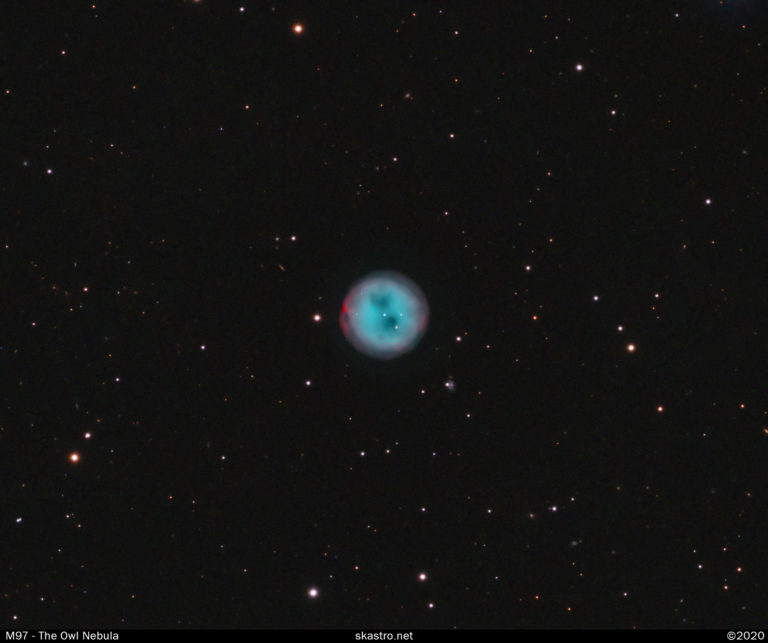The Veil Nebula in Cygnus is the remnant of a supernova of a star about 20 times the mass of the sun that exploded about 20000 years ago. The nebula is a huge, very faint and diffuse object, about six moon widths in diameter and is located about 2500 light years away. Very few telescopes can capture the entire Veil Nebula complex due to the huge angular size that it presents on the sky and creating a multi-frame mosaic is a very time consuming process, especially in the UK where clear nights are such a rare and premium time. This makes DSLR lenses ideal and few are better or as cost effective as the Samyang 135mm that was used to capture this image. The Veil Nebula in HaRGB Image Technical Details The image was captured from my backyard in Nottingham in the UK on the nights of the 13th and…
The Heart and Soul Nebulae are a well known and famous pairing of Nebulae in the late summer/autumn sky of the Northern Hemisphere. These nebulae are located far away – 7500 light years – in the Perseus arm of the galaxy, further out from the core of the galaxy than the Sun and are vast star forming regions rich in Hydrogen Alpha that gives the images the intense red glow.All image data collected with a Samyang 135mm lens at F2.8 with a Moravian G2-8300 CCD camera. Below is the RGB image gathered with Astrodon RGB filters. All binned 1×1: Red 14 x 300s; Green 13 x 300s; Blue 14 x 300s. This gives an RGB integration time of 210 minutes or three and a half hours.The picture looks nice but it does lack punch and vibrancy as it stands. It needs the addition of the Hydrogen Alpha data that will…
Sh2-202 This image shows Sh2-202 glowing to the left of centre with the top of the Soul Nebula at the bottom. Several other Sharpless Catalogue objects are also visible together with a few objects from the VdB catalogue. Sh2-202 Annotated Image Technical Data This image was captured from my back yard with my widefield rig consisting of my Samyang 135mm lens with Moravian Instruments G2-8300 CCD camera and Astrodon RGBHa filters. I used my NEQ6 mount. The data was acquired when the object was overhead from Nottingham UK on 29 November 2019. All data acquired in one imaging run and all exposures binned 1×1 and 300seconds: Ha(3nm) 180 mins, Red>50mins, Blue>45mins,Green>45mins I hope you like it!
M27 is known as The Dumbbell Nebula and is a planetary nebula in the constellation of Vulpecula – The Fox. It is located about 1250 light years away and represents the outer ejected gas envelope of a dying star. This is the first image I took with my CCD camera – Atik460 – on the 28th October 2013. This is a lovely object in the summer and early autumn skies and is very pleasing visually in a pair of binoculars or a telescope. Its brightness and vivid colour make it a perennial favourite object for astro imagers. M27 – The Dumbell Nebula Image Technical Data This is a small dataset taken with my superb Skywatcher ED80 Black Diamond refractor and Atik 460 CCD camera with Baader LRGB filters on an NEQ6 mount, guided with a Skywatcher guidescope and QHY5 (I still have and use this guide setup). This is a…
The Owl Nebula The Owl Nebula is a planetary nebula in the constellation of Ursa Major, one of three planetary nebulae in the Messier catalogue. It is visible as a faint smudge in amateur telescopes but the colours are not evident visually. It is called The Owl Nebula because of the resemblance to the face of an owl. 6 hours and 30 minutes of LRGB in this image M97 Annotated Version The annotated version above shows many distant galaxies in the same field of view as M97, although obviously these are very much more distant. Annotated Version HOO Version The HOO version above shows the Owl Nebula with Hydrogen Alpha mapped as Red channel and OIII mapped to Green and Blue to create the HOO palette colours. 3 hours and 30 minutes of HaOIII. This HOO image could really do with more data added to it in the Ha and…

